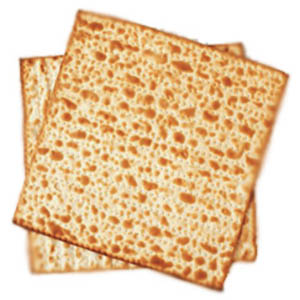

Shabbat HaGadol, the Shabbat immediately preceding Pesach, is a time of frantic final organization and cleaning for the holiday. In this spirit, and in final preparation for Pesach, JLNJ presents some of the most relevant Shu”t SMS questions for the observance of Chag Ha’Aviv:
Ta’anit Bechorot—Rav Kook, in his commentary on the siddur Olat Re’eyah, writes that on Erev Pesach, a bechor (firstborn who was redeemed from a Kohen at the age of one month) who is healthy and knows that fasting during the day will not prevent him from properly fulfilling the commandments of the Seder night must fast Ta’anit Bechorot, and not rely on a siyum in order to eat. Did Rav Kook’s students follow this directive?
Rav Aviner: While it’s true that Rav Kook brings this concept, the Mishne Berura determined that one may take part in a siyum to avoid fasting (470:10). When this was shown to Rav Kook, he said that it is all right to follow this, as the Mishne Berura was a tremendous posek. As a result, many of Rav Kook’s students also ruled that if one would like to be more stringent, he may fast Ta’anit Bechorot. But, by the letter of the law, there is no need to.
Mashiach and Pesach Sheini—If Mashiach will come between Pesach and Pesach Sheini, will all of the Jewish People bring the Korban Pesach on Pesach Sheini?
Rav Aviner: I don’t think so, because we are anusim (unable to bring the korban because of reasons completely out of our control—Pesach Sheini is only for those who had some fault in missing the original date). [Note: Rav Elyashiv adds that this is a discussion in the gemara (Yerushalmi Pesachim 89:1), which concludes that we would in fact bring the Korban Pesach on Pesach Sheini if Mashiach comes between Pesach and then.]
Machine Matzah or Hand Matza—Is there any virtue in using hand matzot on Pesach?
Rav Aviner: For the matzot mitzva on the Seder night, there is a virtue in using the matzot that were made by hand, as they were directly baked by people who had in mind the intent of making matzot without a machine in the middle. Some explain that machine matzot are preferable as they were baked more “cleanly” and there is no concern of chametz in them—Lithuanian and Yerushalmi Jews follow this tradition. When it comes to matters like this, each sect of Judaism should follow its own traditions (Shu”t She’elat Shlomo 110:4).
Spelt Matzot—Does one fulfill his obligation with matzot baked from non-wheat flour (like spelt, for instance)?
Rav Aviner: Yes. Matzot from any of the five grains (wheat, barley, spelt, oat and rye) may be used. This does not include buckwheat, also known as kasha (Yiddish, closest English equivalent: groats) which are kitniot and not a grain.
Staying by Kitniot Eaters—May an Ashkenazi Jew eat food that does not contain kitniot but was cooked in pots that were used to cook kitniot or foods that contained kitniot or kitniot oil?
Rav Aviner: This is fine—kitniot are batel b’rov (not a concern if they are the minority in the mixture of food) (Orach Chayim 453:1, Sh”ut She’elat Shlomo 110:3).
Moshe in the Haggadah—Why is Moshe Rabeinu not mentioned even once in the Haggadah Shel Pesach?
Rav Aviner: So that it will be clear to everyone who caused the redemption that it was God. “I and not an angel; I and not a messenger.” By the way, Moshe is mentioned in most versions of the Haggadah—“And they believed in Hashem and Moshe His servant.” This passuk makes it abundantly clear that Hashem caused the miracles (in Egypt and at the Sea of Reeds), and Moshe was His servant.
The Evil Son—How do we explain why the evil son came to the seder and spoke the way he did?
Rav Aviner: Because he is a son, and it’s important to be happy that he is there despite his attitude, because the greatest tragedy is the fifth son who didn’t even come to the seder (based on the teachings of the Lubavitcher Rebbe).
Special Chalot After Pesach—Is there any reason to bake chalot in the shape of a key or to bake a key into the chalah itself, or is just superstition?
Rav Aviner: There’s no issue with either of these, but there’s no need to do either. [Note: This tradition is mentioned in Ta’amei Haminhagim pp. 249–250. Rav Kanievsky was asked about the tradition to bake “shlissel challah” (key chalah in Yiddish) after Pesach as a sefulah for parnasah (sustenance). He answered too that this is a known tradition and there is no issue with it (Shu”t Mayim Chayim 184)]
Rav Shlomo Chaim Aviner is the French-born head of Yeshivat Ateret Yerushalayim in the Old City of Jerusalem. Shu”t SMS questions can be sent to Rav Aviner at +972 52-3653028.
By Tzvi Silver/JLNJ Senior Israel Correspondent









